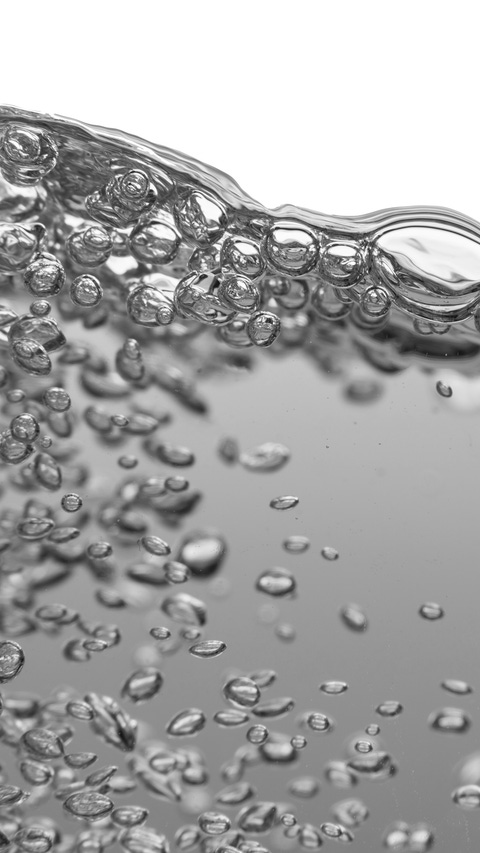The Role of Defoamers in Enhancing Product Quality and Performance
In numerous making procedures, the visibility of foam can dramatically prevent item top quality and functional efficiency. Defoamers function as necessary ingredients that reduce this issue, ensuring smoother production workflows while boosting the practical and aesthetic characteristics of the end products (defoamers). Their application spans a wide variety of sectors, from food and beverage to pharmaceuticals, where consistency and integrity are critical. However, the selection of the ideal defoamer can be vital to accomplishing ideal outcomes, increasing important inquiries concerning solution compatibility and efficiency metrics that merit further expedition.
Understanding Defoamers
Recognizing the duty of defoamers is crucial for keeping product quality across different markets. Defoamers are chemical additives made to protect against the formation and lower of foam in fluid systems, which can negatively affect processes such as blending, filling up, and surface area stress. Foaming can result in ineffectiveness, product issues, and compromised aesthetic allure, making defoamers an essential element in producing operations.
In industrial applications, defoamers help to enhance item uniformity and security. The reliable usage of defoamers not only guarantees smoother production processes yet likewise adds to premium item efficiency.
In addition, the selection and solution of a defoamer should line up with particular application requirements, such as compatibility with other ingredients, effectiveness under differing temperature and pH problems, and prospective governing constraints. Ultimately, comprehending defoamers' features and their significance in different solutions is crucial for maximizing manufacturing and making sure the highest top quality final result.
Sorts Of Defoamers
Defoamers can be classified right into a number of types based upon their structure and system of activity. The primary kinds include silicone-based, non-silicone natural, and not natural defoamers.
Silicone-based defoamers are amongst one of the most efficient, largely due to their capacity to spread promptly on the fluid surface and interfere with foam development. Their one-of-a-kind chemical framework permits premium security, making them appropriate for high-temperature applications and environments with differing pH levels.
Non-silicone organic defoamers, commonly composed of fatty acids or all-natural oils, are valued for their biodegradability and lower poisoning. These are generally made use of in food and drink applications where security and environmental impact are vital.
Inorganic defoamers, which consist of materials like talc or calcium carbonate, act by enhancing the density of the fluid, thus decreasing foam security. They are frequently used in commercial processes where compatibility with other products is not a problem.
Each sort of defoamer has distinctive benefits and restrictions, permitting customized services depending on the specific foaming concerns come across in various applications. Understanding these distinctions is important for enhancing performance and attaining desired item quality.
Applications Across Industries
Various sectors take advantage of defoamers to boost product quality and operational efficiency. In the food and drink industry, defoamers are crucial in procedures such as brewing and milk manufacturing to avoid foam formation, which can bring about inadequacies and item inconsistency. By managing foam, suppliers can ensure much better return and a more consistent product.
In the pharmaceutical industry, defoamers play a why not find out more crucial role in the formula of fluid drugs, where excessive foam can hinder mixing and exact application. Their use assists preserve the stability of the solutions and facilitates smoother manufacturing procedures.
The paint and coverings sector likewise counts on defoamers to enhance the performance of items throughout application. By lessening foam, these ingredients make certain a smoother coating and boost the aesthetic qualities of the end product.

Advantages of Using Defoamers
While the application of defoamers differs throughout markets, their benefits constantly boost product quality and procedure performance. One significant benefit is check this site out the reduction of foam development throughout manufacturing processes, which can otherwise lead to production hold-ups and inconsistencies in product high quality. By decreasing foam, defoamers enable a smoother flow of products, facilitating more effective procedures and minimizing the possibility of equipment breakdowns.
Additionally, the use of defoamers can enhance the appearance and structure of final products. In industries such as finishes, paints, and food processing, extreme foam can compromise the visual aesthetics and total quality, while the proper defoamer application ensures an uniform surface and preferable characteristics. Defoamers can contribute to cost financial savings by reducing waste during production and maximizing the usage of raw products.

Selecting the Right Defoamer
Selecting the ideal defoamer is important for enhancing production procedures and ensuring product top quality. The selection of defoamer influences not just the effectiveness i thought about this of foam control however also the general efficiency qualities of the end product. Aspects to take into consideration include the kind of application, the chemistry of the solution, and the ecological problems under which the product will certainly be used.
Various industries may call for specific defoamer types, such as silicone-based, organic, or polymeric defoamers. Recognizing the compatibility of the defoamer with the main active ingredients is necessary to prevent unfavorable reactions that can compromise product integrity. Furthermore, the defoamer's effectiveness in various temperatures and pH levels must be reviewed to guarantee constant performance.
Evaluating the defoamer in small-scale applications can give valuable understandings into its performance and viability. Consideration of regulatory compliance, specifically in food, pharmaceuticals, and cosmetics, is paramount in picking a defoamer. Eventually, an extensive assessment of these factors will result in the choice of a defoamer that not only regulates foam efficiently yet additionally improves the top quality and performance of the last product.
Final Thought

In verdict, defoamers are crucial additives that significantly enhance product top quality and performance throughout different industries. The calculated selection and application of defoamers lead to cost financial savings, maximized source usage, and boosted consumer complete satisfaction.
Foaming can lead to inadequacies, product issues, and jeopardized visual charm, making defoamers a vital element in manufacturing operations.
